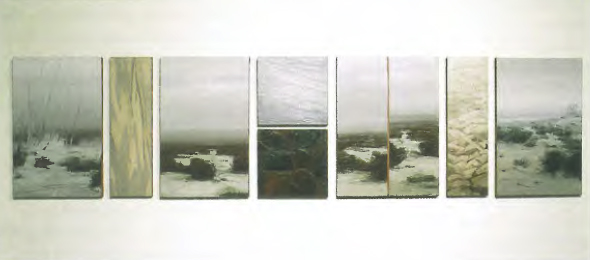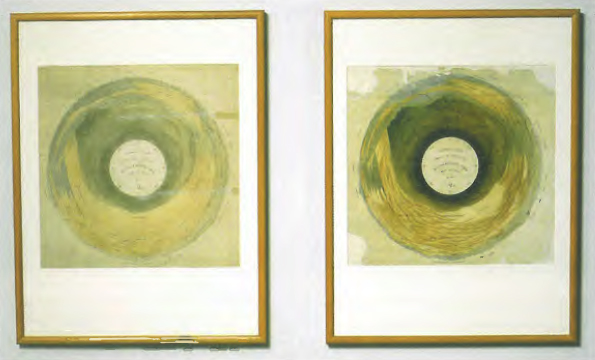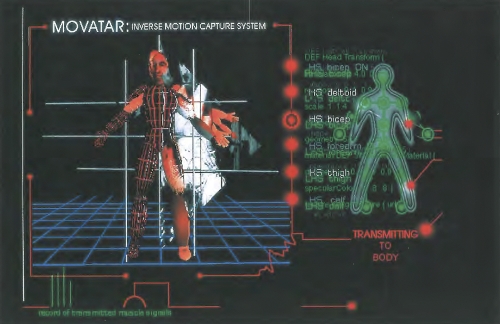
When Raymond Arnold sent me an advance copy of the exhibition catalogue it was accompanied by a postcard. It shows an insect, which at first I thought was a detail of a John Wolseley natural history painting, a delicately-rendered watercolour with the various limbs and organs arrowed and labelled.
When I turned it over, I noted from the caption that it was in fact a painting of Drosophila melanogaster, that cousin of the fruit fly so beloved of genetic scientists for its provision of quick experimental results. The Drosophila life cycle is brief - a new generation every three weeks. My first reaction was therefore a kind of self-satisfaction in being able to recognise the species and its scientific significance.
But then I thought more deeply, about the nature of reproduction – those endless chains of DNA - and I thought that perhaps Raymond was giving me a message about the indissoluble linkage between place and history, especially here in Tasmania, on these islands. The panoramic saga begins with the coastal profiles of maritime explorers and chart-makers, it freezes wide moments of settlement self-regard, it runs up the chains of mountain tiers in the Tasmanian wilderness in the tracks of Henry Hellyer; chains which end in the ball of The compass of Valentine's Peak.
And like all good sagas, the panorama's story repeats and reconfigures down the generations. Between Phenomena is full of throwbacks, atavisms, anachronisms. The Hellyer circle is a keyhole from past to present.
Sense data presents a very partial, approximate view, which is only fully realised when it collides with experience and expectation. Active critical vision is much the same. It needs the experience and the expectation generated by history to fill out the cryptic clues of the present day. Artists such as Henry Hellyer, Simpkinson de Wesselow and Melvin Vaniman provide the template, the search pattern from which we recognise and make sense of Bea Maddock, Martin Walch and Ken Ford.

The caption on Raymond's postcard is written in French, the native language of post-modern theory, and as someone (I think it was Noel Coward) once claimed, the native language of insincerity. The text translates as follows:
...a fly collected and raised by the artist Cornelia Hesse-Honegger at Tessin, a region affected by the fallout from Chernobyl. The first generation presents a mutation, a deformed wing, its growth arrested in the form of a nodule.
I suddenly recalled an image of that news footage from 1986, of the suicidally under-protected Chernobyl firemen running on to the roof, scooping up a shovel full of radioactive charcoal and tossing it over the edge of the parapet. Radiation levels were so high they could only do this once. The panorama is about periphery, about running to the edge of the earth, the edge of vision, suicidally unprotected from the experience of the sublime, from the existential vastness, from the horrors of unmeasured space and unknown darkness. This is the panoramic frame, of emptiness and eternity, alluded to in the blurrings, pixillations and tessellations of David Stephenson and Rod Stennard and David Martin.
But the immensity of the panorama can become legible and meaningful in relation to the form of the land. Across the stretching emptiness we encounter the known and the named: bays and headlands, mountains and lakes, city streets and buildings. Kim Kerze depicts a cinemascopic vastness in which the physical reverberates with psychological space. Mirage people populate Sam Clarke's postcard vistas; and wild things inhabit an archipelago of bizarre islands in Udo Sellbach's Island Tales. Across the oriental scroll of a 360-degree spin, stories are told in strange notations: the nature calligraphies of Michael Schlitz and Christl Berg, the diaristic jottings of Rudolph Major.
Think of that Hellyer image again, with the horizon and all its information rolled up into a coin of conquest, and the now commonplace historical and theoretical observation that the panoramic view is largely a product of power.
It is hardly surprising that we first see the panoramic view emerging in the late 18th century, the age of revolutions; the industrial one with its agricultural enclosures and mechanical inventions, and the political one with its ideological exposures and egalitarian intentions. In 1777 Thomas Hearne makes the first full panorama, a Lake District vista for an octagon in the mansion of his friend, the amateur Sir George Beaumont. In 1784 Vincent Lunardi and his companions - a dog, a cat and a pigeon - make the first balloon ascent in England. In 1788, the year of the arrival in Australia of First Fleet, Robert Barker opens his London Panorama, which is to remain a major attraction for another half a century, with its parade of images of distant lands and famous battles (Hobart and Sydney views feature in the 1831 season). In 1791 British utilitarian philosopher Jeremy Bentham articulates the "inspection architecture principle", and its practical, penal application, the "panopticon" prison.
In due course, the ripples of this visual language reach the shores of Australia. In his 1820 Journal of two expeditions into the Interior of New South Wales, explorer and surveyor-general John Oxley runs through his state of the art technology (circular compass and chronometer, sextant wedge and telescope cylinder) and proclaims he is not afraid of the bush. In 1833 the Lieutenant Governor of Van Diemen's Land builds an antipodean panopticon on the Tasman Peninsula, and names it after himself. Hellyer souvenirs an Aboriginal circle, a bark painting of the sun, while in his Patterdale farmhouse, John Glover Jnr puts a hole in the roof so that he can draw the disc of the moon.
Here we are imagining another circle, the circle described by that first generation mutant Chernobyl fruit fly, unable to lift off, spinning helplessly on its one wing.
How the earth and the circle of power revolve, the power of centre against periphery. The power of the British Empire, the power of the Van Diemen's Land Company, the power of the Hydro, the power of the Soviet nuclear industry, the power of transnational resource corporations. More postcards. Julie Gough's fragmented tourist panorama depicts signposts and maps with names such as 'Black Charlie's Opening' and 'Piccaninny Point.'
How the world and the wheel of history turn. In Raymond's introductory essay, he describes being involved in a peripheral way in the campaign to save the Franklin in the early 1980s. Twenty years on, the conservationist campaign is to stop the Southwood plant and to save the old growth forests of the Styx River. If nothing else, this exhibition might just make us wonder what kind of panorama our children will see when they look north from Sheppard's Hill across Electrona and North West Bay.












